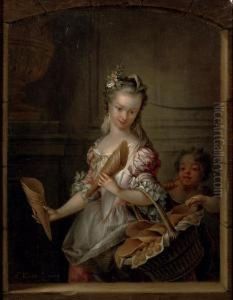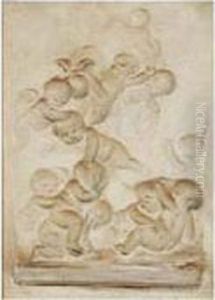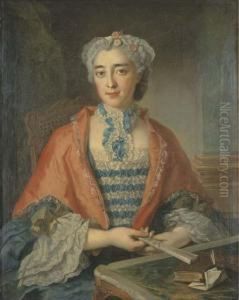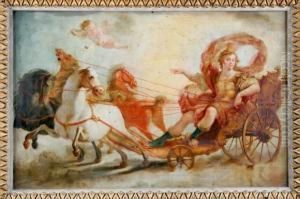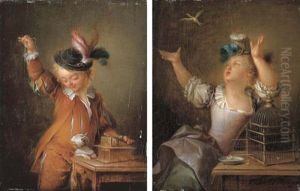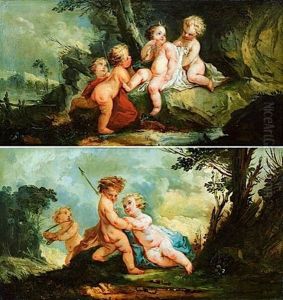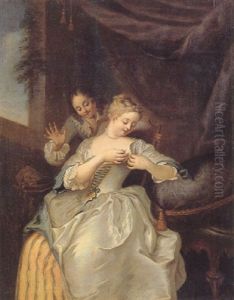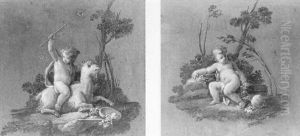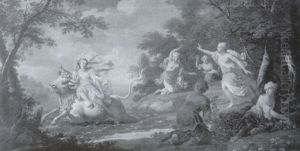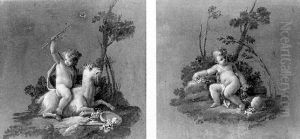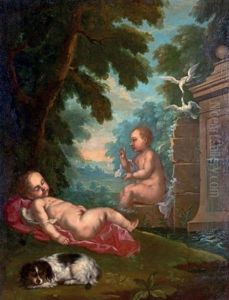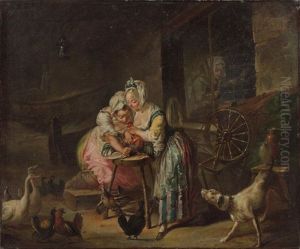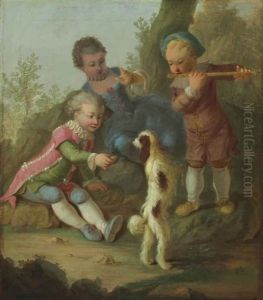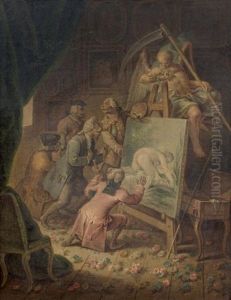Francois Eisen Paintings
Francois Eisen was a French painter and illustrator born in Brussels in 1695. He was best known for his work in the Rococo style, a decorative and theatrical style of art that flourished in France during the early 18th century. Eisen's father was also a painter, which likely had a significant influence on his decision to pursue a career in the arts.
Eisen initially received his artistic training in Brussels before moving to Paris to further his studies. In Paris, he found himself in the midst of the Rococo movement, which was characterized by ornate detail, pastel colors, and often romantic, playful themes. He became a part of the thriving artistic community there and was influenced by the works of masters like Antoine Watteau and Francois Boucher.
Throughout his career, Eisen became well-regarded for his genre paintings, which often depicted scenes of everyday life with a touch of elegance and wit. He also worked on religious themes and was skilled in creating altar pieces for churches. Besides painting, Eisen was a proficient illustrator, contributing to the illustration of books and other printed materials. His illustrations often featured delicate lines and were imbued with the same light-hearted and ornamental qualities found in his paintings.
Eisen's work reflected the taste of the French aristocracy during the reign of Louis XV. His ability to capture the essence of the Rococo style made him a favorite among the nobility, who were his primary patrons. However, as Rococo fell out of favor and Neoclassicism gained prominence, Eisen's style became less fashionable.
Despite the change in artistic trends, Eisen left a legacy as a quintessential Rococo artist. His works are now appreciated for their historical value and their representation of the cultural and artistic sentiments of his time. Francois Eisen passed away in 1778, leaving behind a body of work that continues to be studied and admired by art historians and enthusiasts alike.











